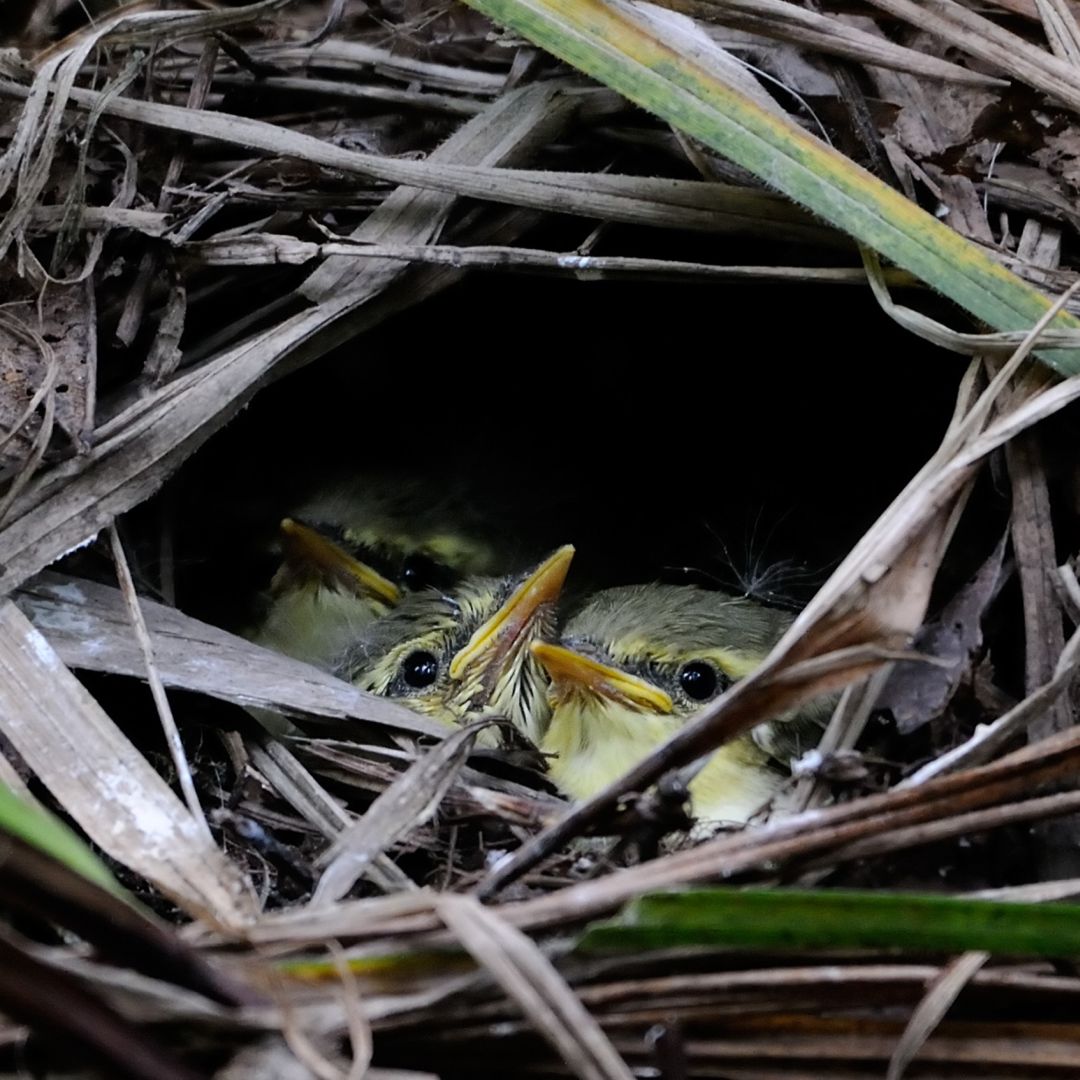Understanding more about nest predator identity in the UK
August 22, 2025

New research by the British Trust for Ornithology (BTO) and University of East Anglia, in collaboration with other partners, has given the most comprehensive analysis of predation events at birds’ nests within England, Wales, Scotland and the Isle of Man, helping the conservation community to understand more about predator identity.
Commissioned and funded by the charity SongBird Survival, the independent research examined camera studies of over 2,000 wild birds’ nests. A number of research partners provided camera studies for the analysis, including the RSPB, Wildfowl and Wetlands Trust and Working for Waders Trust.
The study looked at the impact of predation on songbirds, reviewing camera footage of 921 songbird nests, of which 203 predated nests could be analysed. This included the nests of threatened species like the wood warbler, spotted flycatcher and song thrush.
An analysis of songbird predation found that eggs and chicks of ground-nesting songbirds were mostly taken by mammals (mainly badger and fox – 24%) but also corvids (20%), birds of prey (18%) and adders (6%). There was limited footage of predation events for tree-nesting songbirds. The research found that magpies and grey squirrels were rarely implicated in songbird nest failure.
The study also looked at over 1,000 wader nests and found that eggs of birds like curlews, lapwings, and oystercatchers were mostly predated by mammals - mainly badgers (42% of predation events for waders) and foxes (23%), with sheep and deer also contributing (6%).
Predator-prey cycles are part of the natural cycle of life. However, nest predation can become an important issue when already at-risk bird populations are subjected to excessive levels of nest predation. Understanding nest predation is key to comprehending the threats to bird populations, but there is limited scientific evidence about what habitats, bird species or nest types are most at risk and from which predators. However, the study notes the limited availability of nest camera footage available across different species and habitats. For example, nearly three quarters of songbird nest footage available, 73%, was from woodland; this could account for the predominance of jays in predation events. In particular, the researchers note there were few camera studies available of Galliformes (such as partridge, grouse or pheasants), tree-nesting songbirds, and birds from farmland or urban settings.

Dr Madeleine Barton, Research Ecologist at BTO, and lead author of the study, said:
“Nest predation is a leading cause of nest failure for birds, and managing the impacts of predators can be a key strategy in protecting threatened species. The results of our study largely confirm our expectations of which predators are most active but also provide evidence for the potential impacts of several new predators.
“Our findings highlight just how vital it is to expand the availability of nest camera data to deepen our understanding and improve conservation efforts."
Professor Paul Dolman, Professor of Conservation Ecology at the University of East Anglia, said:
“Conservation efforts to reduce the impacts of nest predators on threatened or declining species should be based on robust evidence of which predator species are involved. Nest camera studies are invaluable, giving unbiased objective information, that often challenges or contradicts the assumptions we hold.
“While such studies confirm species such as fox and badger as major nest predators, they also reveal the very wide range of predator species involved and show that nests of different bird species are exposed to very different predators depending on their nesting behaviour and habitat. Further systematic nest camera studies are important to improve our understanding, particularly for understudied groups and habitats."
Susan Morgan, Chief Executive of SongBird Survival, which commissioned and funded the independent study, added:
“The impact of predation is just one part of a complex web of threats to songbirds - from climate change to habitat loss and pollution. We welcome the collaborative effort behind this study to give further insight into this complex topic and to identify gaps in the scientific evidence”.
ENDS
We need your help to fund our crucial independent research and work.
Join our community and receive our exclusive membership benefits.
Receive our monthly e-news and regular updates